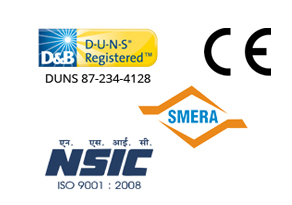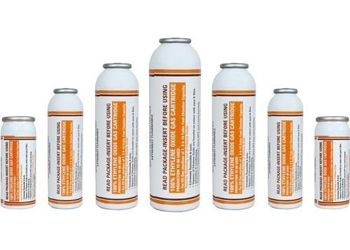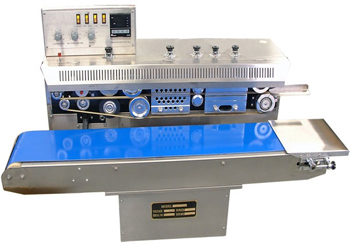In the critical domain of medical sterilization, ensuring uninterrupted operation of sterilization equipment is fundamental to patient safety and healthcare efficiency. Italy’s healthcare infrastructure, with its high demand for quality and compliance, increasingly relies on advanced ETO sterilization machines and other sterilization equipment that emphasize system redundancy and high availability. These technological strategies minimize downtime, reduce risks of sterilization failures and maintain smooth workflow continuity across hospitals and pharmaceutical facilities.
This article explores how leveraging system redundancy and high availability concepts enhances the reliability of ethylene oxide gas sterilization systems and other sterilizing machines in Italy, supporting the country’s stringent healthcare standards and operational needs.
System Redundancy and High Availability in Sterilization Equipment
System redundancy involves duplicating critical components or functions within a sterilization system so that if one component fails, another can take over immediately without interrupting the sterilization process. High availability ensures that sterilization equipment remains operational and accessible almost continuously, reducing downtime to minimal levels.
In the context of ETO sterilization equipment, these concepts may include duplicating:
- Sensors and actuators controlling temperature and pressure
- Vacuum pumps and gas injection units
- Control systems and software modules

Italy’s medical sterilization units benefit from this approach by ensuring the sterilizing machines consistently meet sterilization cycle requirements without delays caused by hardware or software failures.
Ethylene Oxide Gas Sterilization: The Importance of System Redundancy in Italy
The ethylene oxide gas sterilization process is complex, involving strict control over temperature, humidity, pressure and gas concentration over extended cycles. A failure in any part of the system can compromise the sterilization outcome, potentially leading to surgical instrument contamination and risking patient safety.
Redundancy plays a vital role in:
- Preventing Process Interruptions: Dual sensors or pumps automatically switch over during faults, maintaining process integrity.
- Ensuring Cycle Completion: Backup systems prevent premature cycle termination or unsafe conditions.
- Protecting Sterility Assurance Levels: Reliable equipment operation upholds regulatory requirements.
Client Speaks
“I did buy a 50 litre ETO sterilizer from Mr Alex, three years ago for Sun Orthopaedic Hospital, Bangalore. I am extremely happy with the service and performance of the machine. Also the running cost of the machine is extremely low.”
High Availability of Medical Sterilization Equipment Boosts Workflow in Italy’s Healthcare Sector
High availability solutions focus on minimizing downtime, allowing sterilization facilities to:
- Maintain Continuous Operation: Systems designed for quick component switchover ensure sterilization machines are almost always ready for use.
- Reduce Maintenance Impact: Scheduled maintenance can be performed on backup units while primary units remain operational, avoiding production halts.
- Support Surge Capacity: Facilities can handle peak sterilization demand without equipment overload.
In Italy’s pharmaceutical manufacturing, ETO sterilization machines with high availability ensure uninterrupted sterilization of packaging and drug delivery devices, critical for market supply continuity.
ETO Sterilizer Equipment: System Redundancy Features in Italy
Modern sterilization equipment often incorporates redundancy at multiple levels:
- Vacuum Pumps: Water ring rotary pumps are doubled to maintain required vacuum during the evacuation phases of the EO sterilization cycle.
- Gas Injection Systems: Dual gas injection valves ensure continuous and precise ethylene oxide delivery.
- Control Systems: Redundant controllers and sensors verify key parameters such as temperature and pressure, automatically switching control in case of faults.
Testimonial
“Excellent service and quality of machine“
Implementing Redundancy and High Availability in Italy’s Sterilization Facilities
To effectively implement redundancy and high availability, Italy’s sterilization departments may consider:
- Comprehensive Risk Analysis: Identify critical points where redundancy will most benefit system reliability.
- Investment in Quality Equipment: Choose sterilizers and components with built-in redundancy features.
- Regular Testing and Validation: Conduct routine testing of backup systems to ensure seamless failover when needed.
- Staff Training: Equip operators and maintenance personnel with knowledge to manage redundant systems efficiently.
These strategies ensure Italy’s medical sterilization infrastructure remains robust and responsive.
Conclusion
In Italy’s demanding healthcare environment, leveraging system redundancy and high availability in sterilization equipment is crucial for uninterrupted sterilization operations. These systems enhance process reliability, support compliance with strict regulatory standards and ultimately safeguard patient safety by maintaining the sterility of medical instruments and pharmaceutical products.
Italy’s hospital sterilization equipment adopt these advanced approaches benefit from fewer interruptions, greater throughput and improved confidence in sterilization outcomes. As Italy continues to uphold world-class healthcare standards, redundancy and availability in sterilization equipment stand as pillars of operational excellence.







